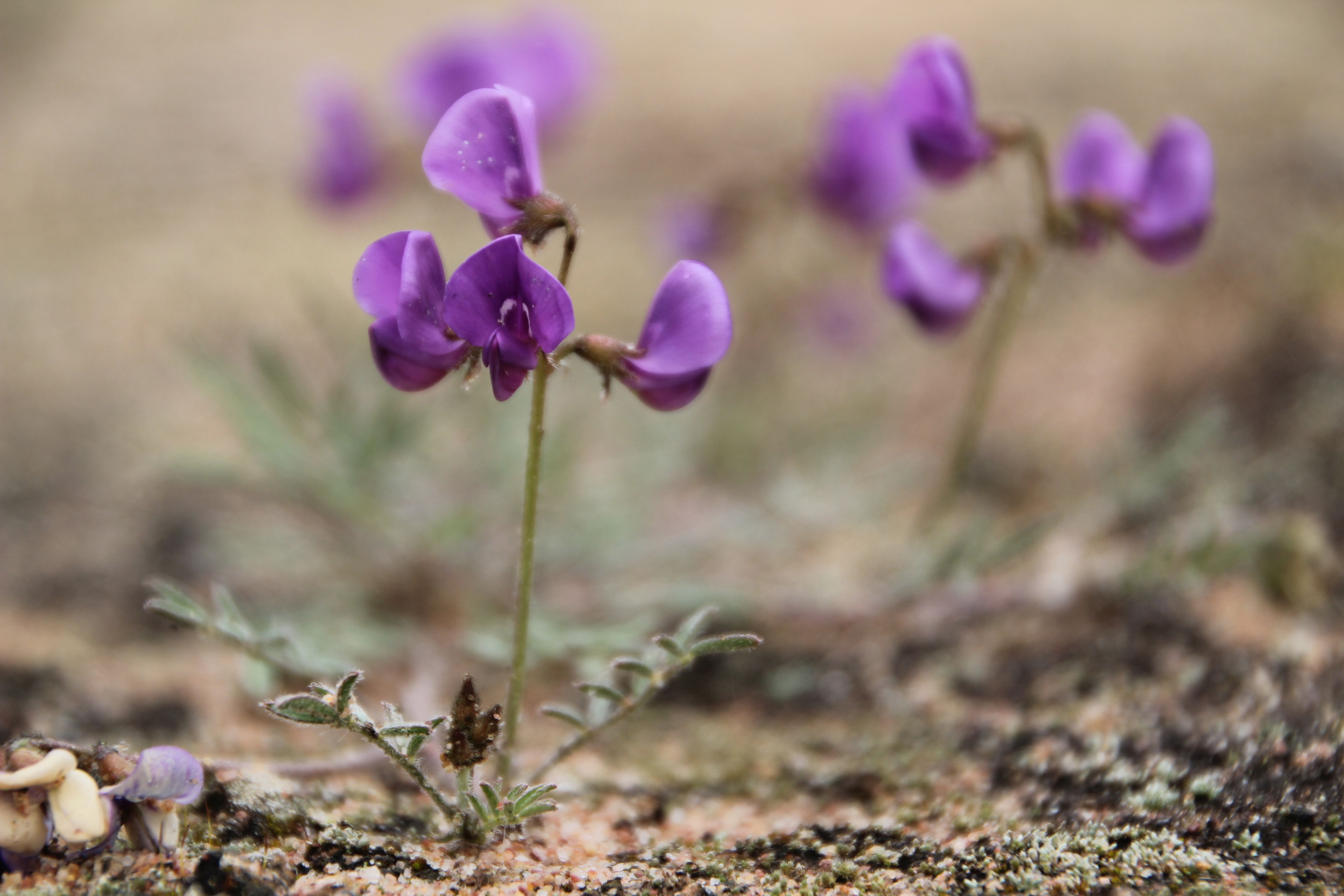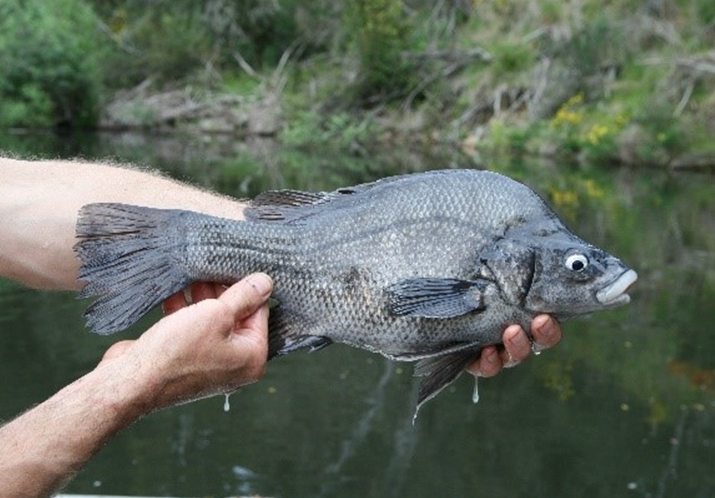Protected flora
Protected flora are native plants that have legal protection under the Flora and Fauna Guarantee Act 1988 (FFG Act). In many circumstances – particularly on public land – it is an offence to ‘take’ (meaning kill, injure, disturb or collect), trade, keep, move or process protected flora.
There are 3 ways that plants may qualify as protected flora:
- All plant taxa (species, subspecies or varieties) listed as threatened under the FFG Act
- All plant taxa belonging to communities listed as threatened under the FFG Act, where they occur in that community
- Plant taxa that are declared protected by the Governor in Council. These are taxa which are not threatened but require protection for other reasons. For example, some species which are attractive or highly sought after, such as orchids and grass trees, are protected so that the removal of these species from the wild can be controlled.
Note that in addition to FFG Act controls, planning permits may also be required to remove native vegetation.

Declared Protected Flora List
Declared Protected Flora List (PDF, 91.1 KB)
Declared Protected Flora List (DOCX, 32.8 KB)
Gazette notice:
Declared Protected Flora Gazette Notice 16 May 2024 (PDF, 171.8 KB)
Declared Protected Flora Gazette Notice 16 May 2024 (DOCX, 63.3 KB)
The Declared Protected Flora List has been updated on 16 May 2024 to reflect the principles in the Declared Protected Flora Guidelines. Some taxa have had their protection status changed or have been moved to the Threatened Species List. The document below outlines these changes.
Declared protected flora - Summary of changes (PDF, 232.8 KB)
Protected flora categories
The FFG Act creates two categories of protected flora; ‘restricted use protected flora’, and all other protected flora (referred to here as ‘generally protected flora’).
These categories have separate controls in place regarding how people interact with them, and separate penalties if people don’t adhere to those controls.
Permits may be required to take ‘restricted use protected flora’ for commercial or personal use. Take for other reasons (e.g., take incidental to track maintenance etc.) is not restricted under the FFG Act.
Only declared protected flora may be classified as ‘restricted use protected flora’.
Permits may be required to take ‘generally protected flora’ for any reason (e.g., development, infrastructure maintenance works etc., as well as for commercial or personal use).
All flora taxa on the Threatened List are ‘generally protected flora’. Taxa on the declared protected flora list may also be classified as ‘generally protected flora’.
Declared Protected Flora Guidelines
The Declared Protected Flora Guidelines provide decision-making guidance to assist in determining whether to recommend that a certain species of flora should be declared protected. The guidelines aim to promote consistency and transparency and ensure that there is clear rationale for each taxon’s declaration as protected flora. These guidelines relate only to protections under the FFG Act, however, other regulations (e.g., native vegetation regulations) may also apply.
These guidelines do not apply where the flora is already a threatened species or part of a threatened community as these groups are already ‘protected flora’.
Declared Protected Flora Guidelines (PDF, 7.4 MB)
Declared Protected Flora Guidelines (DOCX, 3.9 MB)
Declared Protected Flora Guidelines (accessible) (DOCX, 279.3 KB)
Protected flora on private land
A person may take, trade in, keep, move or process protected flora from private land except for:
- tree-ferns, grasstrees or sphagnum moss taken for the purpose of sale, or
- flora from a critical habitat.
The Order also outlines the conditions for trading tree ferns and grass trees.
View or download the Flora and Fauna Guarantee (Taking, Trading In, Keeping, Moving and Processing Protected Flora) Order 2004 (PDF, 41.6 KB).
Applying for a protected flora permit
The application form and guidance note below are provided for proposals involving:
- Incidental take of Protected Flora on public land – where plants are removed but not collected or intended for personal use (e.g. as part of development activities).
- Take of Protected Flora on public land for personal use – such as collecting or propagating plants, or using them for food, fibre or display
Application form for the Take of Protected Flora (DOCX, 724 KB)
Application Guide: Taking Protected Flora (PDF, 253 KB)
Permits may also be required to take Protected Flora for research, commercial, or educational purposes. Application templates for these activities are available on the Conservation Regulator Page.
Listed fish
Overview of listed fish
In Victoria, the taking, trading in and keeping of fish listed on the Threatened List is regulated under both the FFG Act and the Fisheries Act 1995.
Under section 52 of the FFG Act, it is an offence to take, trade in or keep listed fish without a licence or unless authorised by an order published in the Government Gazette.
The FFG (Taking, Trading in or Keeping of Listed Fish) Order No. 1/2020 authorises the taking, trading in and keeping of several species of listed fish, subject to terms and conditions. Restrictions may apply to the size and number of fish that can be caught, location, time of year and method of take, to ensure the level of take is sustainable. The order allows the take of the following listed fish in accordance with the conditions set out in the order:
- Flat-headed Gudgeon or Bull-headed Gudgeon (Philypnodongrandiceps)
- Freshwater Catfish (Tandanus tandanus)
- Golden Perch (Macquaria ambigua)
- Macquarie Perch (Macquaria australasica)
- Murray Cod (Maccullochella peelii)
- Murray Spiny Freshwater Crayfish (Euastacus armatus)
- Silver Perch (Bidyanus bidyanus)
- Southern Bluefin Tuna (Thunnus maccoyii)
- Trout Cod (Maccullochella macquariensis)
- Western Carp Gudgeon (Hypseleotris kluzingeri)

Applying for a listed fish permit
If you wish to take, trade and/or keep protected fish outside of the conditions of the FFG order, you will require a listed fish permit.
For information on how to apply for a listed fish permit, please visit the Conservation Regulator website.
Page last updated: 10/10/25